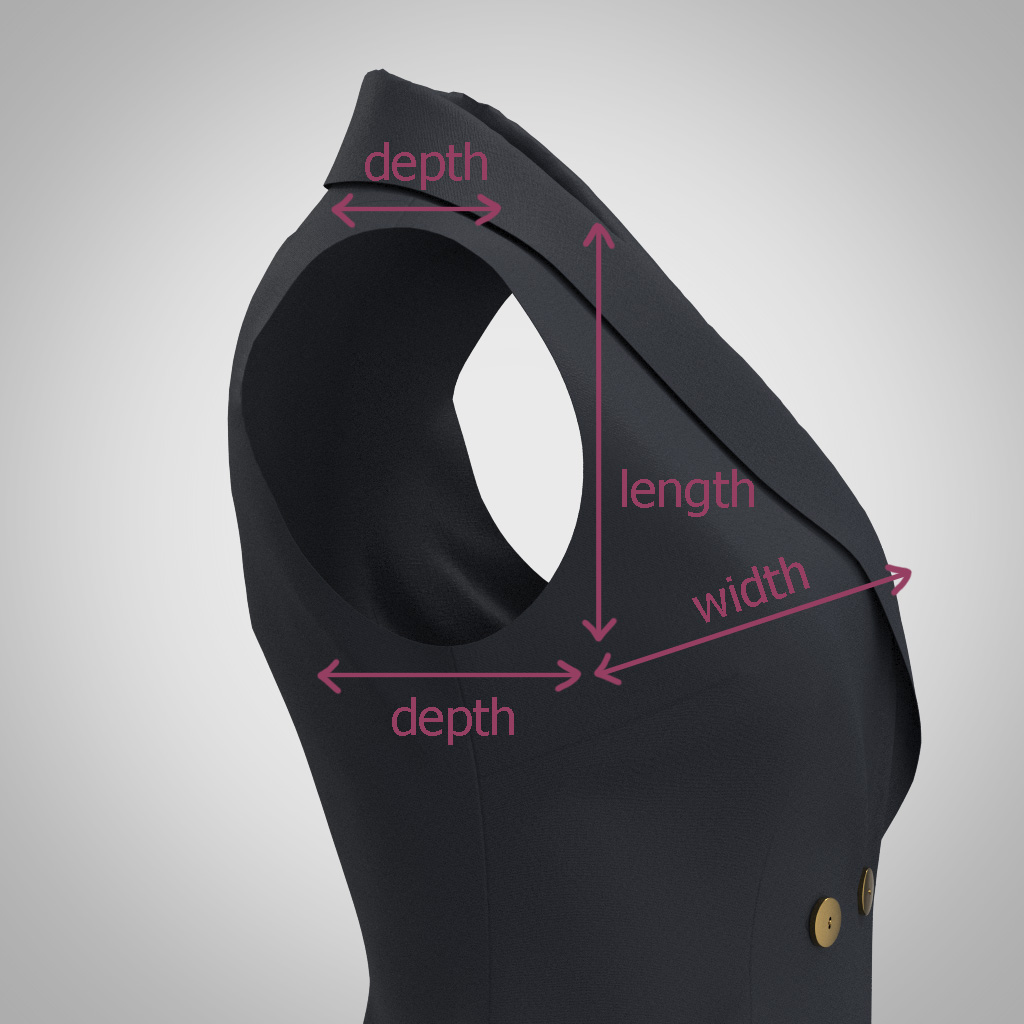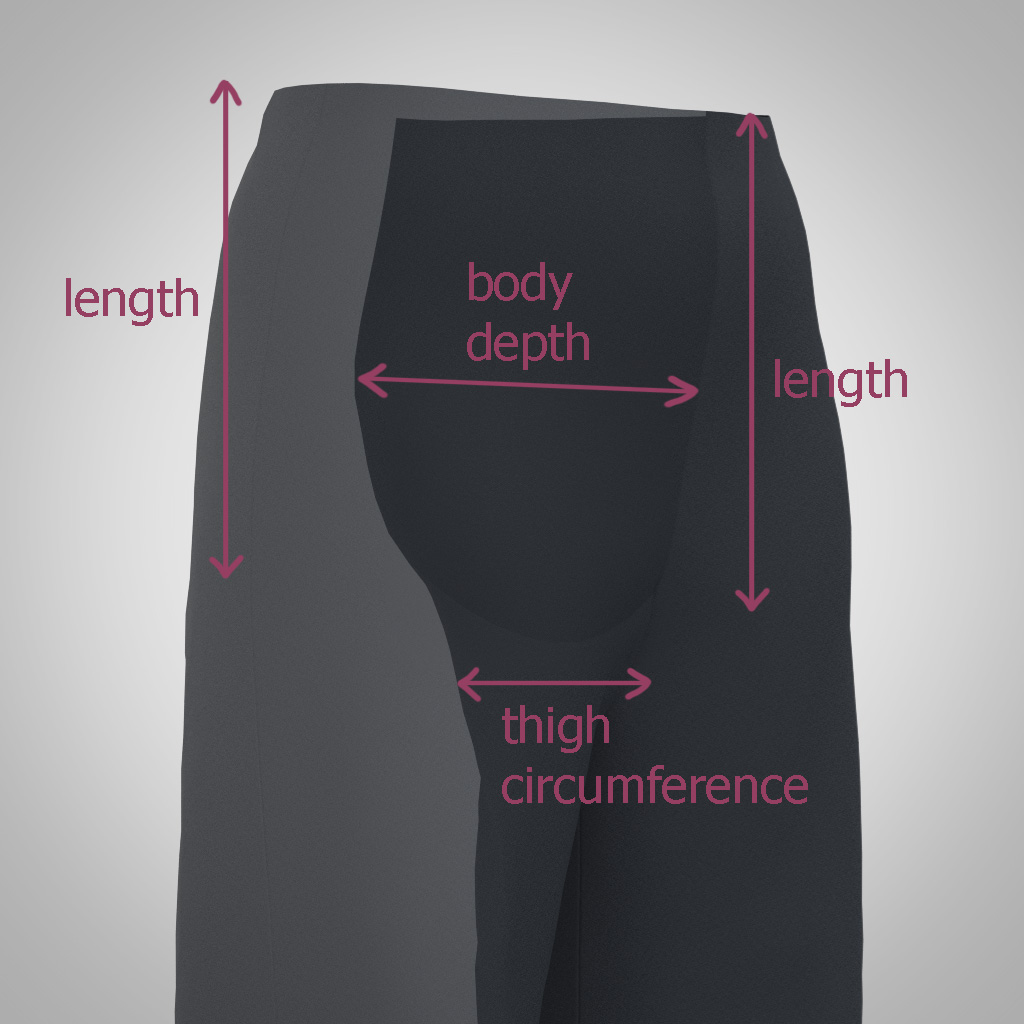Fitting is one of the key steps of producing any garment. If it doesn’t fit, it doesn’t sell (or it gets returned). On some areas of a garment it is easy to identify fit issues and there are obvious solutions. Others, like the two we’re going to talk about today, are particularly tricky and elusive when it comes to fit. Armholes and pant rises are two areas that seem to cause the most problems. They are very different areas of the garment, but they actually have a lot in common.
Armhole fit issues
Armholes (and the sleeve caps that sew to them) are one of the most challenging places on a garment to fit. There are a myriad of common fit issues involving armholes including restricting arm movement, gaping at the front armhole, too tight and rubbing the underarm, and even causing the neckline and shoulder line to shift up and back.
Pant rise fit issues
Pant rises, both the front and back, are another tricky place to fit on a garment. Not only do the front and back rise need to sit at the desired waistband height, but there needs to be a balance of height to width that creates the rise length for a proper fit. A poorly fitted rise can result in many unflattering and uncomfortable fit issues such as a camel-toe crotch, wedgie, saggy diaper look, limited leg movement, gaping back waist, and more.
So what makes armholes and pant rises so difficult to fit?
Armholes and pant rises are both curves
Fitting curves on the body using flat pieces of fabric is like trying to perfectly gift wrap a soccer ball. Nothing on the body is flat – especially armholes and rises. To make the flat fabric fit these curved areas, the pattern needs to be curved as well. Curves tend to be harder to draft from scratch because they aren’t as simple as measuring a distance and drawing a line with your ruler.
Armholes and rises are not only curved, but they cover both length and circumference. The bottom underarm part of an armhole is part of the chest circumference. The mid part of the armhole covers the length from the shoulder to underarm. Then the very top part of the armhole, although it looks to be vertical like the mid armhole, actually covers the depth across the top of the shoulder (half the depth on the front and half on the back armhole).


The bottom curve of a pant rise covers part of the circumference of the thigh as well as the body depth. The vertical part of the pant rise covers the vertical crotch depth. Remember, the back rise needs to cover the curve of the butt as well as any curve of the front abdomen. Even though this is length on the pattern, and length on the rise, it is not a flat vertical measurement on the body.
The bottom curve of a pant rise covers part of the circumference of the thigh as well as the body depth. The vertical part of the pant rise covers the vertical crotch depth. Remember, the back rise needs to cover the curve of the butt as well as any curve of the front abdomen. Even though this is length on the pattern, and length on the rise, it is not a flat vertical measurement on the body.
Armholes and pant rises are at the intersection of different areas
As you can see from above, armholes and pant rises affect multiple areas of a garment. There is more than one spot of the body and pattern that needs to be considered when shaping and fitting these areas.
Armholes are part of the shoulder width, across front and back armhole (typically around the mid-point), and bust circumference. Front armhole curves are greatly affected by cup size as well. To make things more tricky, the relative proportions of each of these measurements change with overall body size too which means that a size 2 armhole and a size 22W armhole will look very different in shape.
Pant rise curves are affected by the thigh circumference, forward or backward rotation of the hips, body depth of the abdomen, waist size, as well as the overall length of the rise.
Armholes and pant rises change for each body type
What further makes these two areas difficult to fit is how the curves need to change for different body shapes. Body size plays a part, but beyond that, these areas on the pattern will look different to fit different body shapes and even postures.
As cup size increases, more of an armhole needs to cover the ‘x’ axis. This ends up making the front armhole more of a tilted ‘C’ shape and less of a ‘J’ shape. The posture of the shoulders is fit by changing the rotation and position of the armhole compared to the side seam.
For pant rises, the height of the fullest part of the hip and butt, as well as the fullness and muscle size of the thigh changes the rise curve. Hip rotation changes the balance of the front to back rise. Even age can change the body shape of the wearer and thus require different adjustments to the fit of the pattern.
Armhole and pant rise shapes change depending on the garment style
Not only do the shape of these curves both change for different body types, but they can look different for different styles of garments.
Whether a garment has sleeves or not will often change the shape of the armhole. Usually if there aren’t sleeves, the shoulder is cut back for a more open armhole look and fit. Styles with puff or gathered sleeves might also reduce the shoulder width and change the armhole curve to have the gathers sit on top of the shoulder as opposed to beyond it.
Pant rise shapes for a wide-thigh pant are different than for a skinny pant even for the same rise length. A pant with a wide thigh has more of a ‘J’ or ‘L’ shaped rise, while a pant with a skinny thigh will have a more sloped hockey stick shape. If you are using a block pattern to create your pants, make sure to use one from a similar thigh fit for the best results.
In my experience, armholes and pant rises are two of the most difficult areas of a garment to fit. They both are curved areas that intersect multiple points of measure and change shape for different body types and garment styles. The best way to fit these areas is to understand the factors that affect them and pay attention to the body shape of the customer you are trying to fit. As you practice, you will start to recognize how the fit and pattern shapes correspond and be able to anticipate and prevent issues in future patterns.

Mindy Joy
8:50 pm November 20, 2023This is an excellent article (though a little hard to follow). Still, every fashion designer and fashion design student should read it. Having a better understanding of the nuances of what it takes to make a well-fitted garment will help your line go far.
Leah McAvin
6:59 am February 13, 2024Armholes & sleeves are my achilles heel. Over and over and over again I will rework, remeasure, make adjustments, make multible mock ups and then end up scrap the pattern and start over from scratch, ugh. I would love to take a workshop or even pay for private lessons to improve this pattern drafting issue. I live in St Louis, do you know of any workshops on advanced pattern drafting skills? or someone I could take lessons from?
Alison Hoenes
8:42 am February 13, 2024Hi Leah, Armholes and sleeves can be super challenging! They are all curves and the armhole depends so much on the bust size. The pattern also has to account for a lot of arm movement. As for classes in STL, The City Sewing Room has patternmaking classes from time to time. You could also look into taking a patternmaking class at WashU or Lindenwood's Fashion Design programs. I don't currently offer patternmaking classes, but I've gotten a few requests for this recently and am considering offering something later this year. I'll keep you posted if I do!